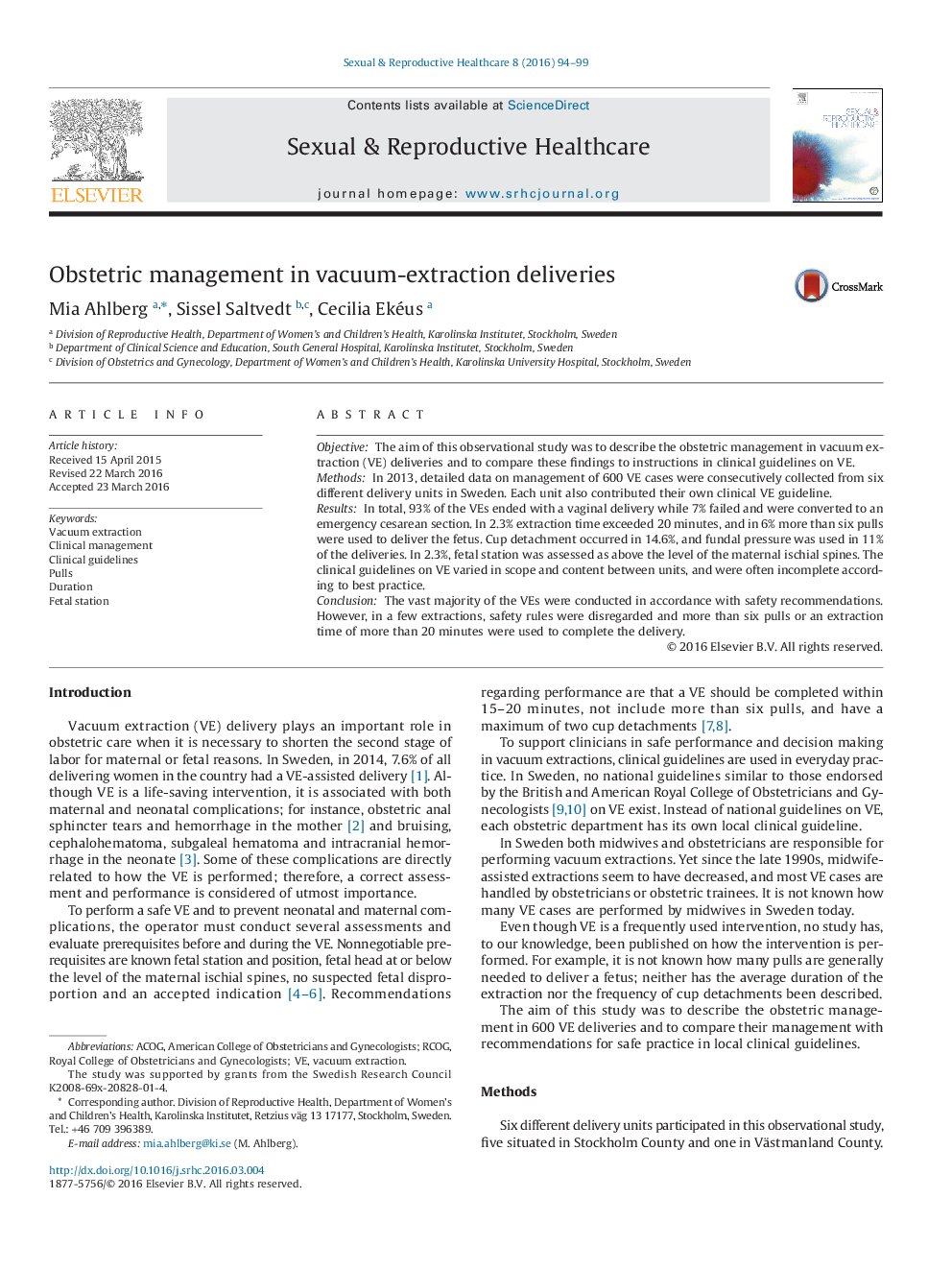| Article ID | Journal | Published Year | Pages | File Type |
|---|---|---|---|---|
| 2636117 | Sexual & Reproductive Healthcare | 2016 | 6 Pages |
•Guidelines on vacuum extraction delivery are not complete or evidence based.•Improvements in clinical management in vacuum extraction deliveries can be made.
ObjectiveThe aim of this observational study was to describe the obstetric management in vacuum extraction (VE) deliveries and to compare these findings to instructions in clinical guidelines on VE.MethodsIn 2013, detailed data on management of 600 VE cases were consecutively collected from six different delivery units in Sweden. Each unit also contributed their own clinical VE guideline.ResultsIn total, 93% of the VEs ended with a vaginal delivery while 7% failed and were converted to an emergency cesarean section. In 2.3% extraction time exceeded 20 minutes, and in 6% more than six pulls were used to deliver the fetus. Cup detachment occurred in 14.6%, and fundal pressure was used in 11% of the deliveries. In 2.3%, fetal station was assessed as above the level of the maternal ischial spines. The clinical guidelines on VE varied in scope and content between units, and were often incomplete according to best practice.ConclusionThe vast majority of the VEs were conducted in accordance with safety recommendations. However, in a few extractions, safety rules were disregarded and more than six pulls or an extraction time of more than 20 minutes were used to complete the delivery.
